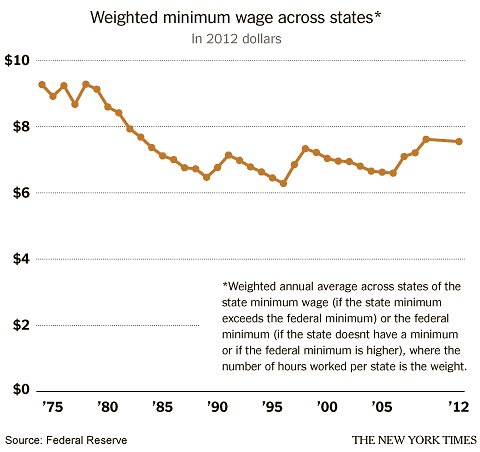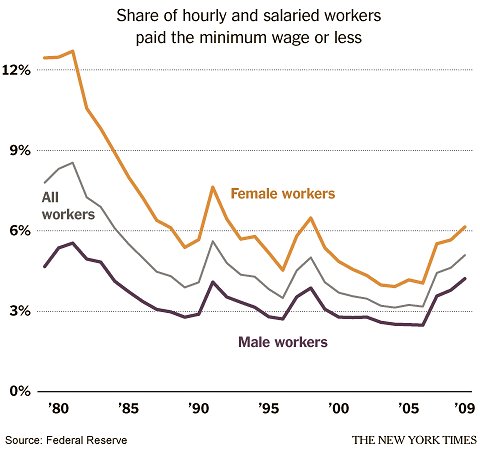
Nancy Folbre is an economics professor at the University of Massachusetts, Amherst.
Only slightly more than half of college presidents (54 percent) believe that a bachelor’s degree is worth more or a lot more than five years ago, according to a recent survey conducted by the Chronicle of Higher Education.
A majority of Americans (57 percent) say the higher education system in the United States fails to provide students with good value for the money they and their families spend, according to a recent survey by the Pew Research Center.
Today’s Economist
Perspectives from expert contributors.
It seems that the golden age of human capital is losing its shine.
That shine came not just from a high rate of return (both individual and social) on a college degree, but also from a beautiful, if partial, alignment between ideals of human development and the needs of employers.
It was a happy alignment, not just for college professors and their students, but for the soul of capitalism itself. Academic striving would be rewarded. Merit would prevail. Students willing and able to invest in their own abilities had a good shot at permanent prosperity.
Not anymore. Problems are particularly conspicuous on the supply side: declining state support, higher tuition and fees, increased inequality of access and the growing burden of debt. The investment costs more than it once did and remains beyond the reach of those who need it most.
Problems are also increasingly apparent on the demand side: high unemployment and underemployment rates among college graduates.
Historical data suggest that investing in college still offers significant economic benefits to those who actually complete their degree requirements and find employment (especially if they enjoy parental support or generous financial aid).
But private rates of return have begun to decline. Uncertainty about future benefits lowers the expected dollar value of a degree. Rates of return differ widely by personal characteristics, the institutions students attend and the majors they choose.
In their highly respected economic history, “The Race Between Education and Technology,” Claudia Goldin and Lawrence Katz contend that the demand for college-educated workers began to outstrip the supply in the United States about 1980. Since then, the college premium, or difference in lifetime earnings between those with degrees and without, has increased.
But in the 1990s the global supply of college-educated workers burgeoned and large American corporations improved their ability to use skilled labor in other countries. As the economist Richard Freeman points out, developing countries have invested heavily — and successfully — in their higher education systems. In 2005 Chinese universities awarded five times as many bachelor’s degrees as they did in 1999.
This global expansion of the educated labor force is likely to put downward pressure on the college premium in the United States.
Another possibility is that the demand for highly educated workers has changed shape in recent years. With vast improvements in information technology, employers may now seek a small number of specialized, technically trained experts rather than a large number of versatile, diversified liberal arts graduates.
Certainly students are now encouraged to think more strategically about their majors and to specialize in more technical fields. This is good financial advice, but it won’t guarantee success. Unlike financial capital, which can be easily moved from one investment to another, investment in human capital represents a sunk cost.
If more and more students pile into science, technology, engineering, and mathematics, the wage premiums for those majors could decline. With a high rate of technical change and continued globalization of labor markets, some students could also find their specialization obsolete. Someday soon there will probably be an app for writing apps.
The evolution of the global human capital market has momentous political implications. Like many Democrats, President Obama is bullish on human capital. He favors increased public investment in education, ranging from early childhood to post-secondary programs. The assertion that such spending will generate a high individual and social rate of return is based on the optimistic expectation that demand for better-educated workers will remain strong.
On the other hand, many critics of public-education subsidies are bearish on human capital. The economist Richard Vedder, for instance, warns against both private and public overinvestment in education, pointing to the growing tendency for college graduates to land in jobs that don’t actually require the credential they hold.
If the bears are right, we may be moving toward a stage of capitalism less dependent on a growing supply of home-grown human capital. In that case, many of those bullish on higher education investments in the United States could end up as red meat.
Those who believe, as I do, that education has intrinsic value both to individuals and to society as a whole should reconsider their habit of relying on market-based private rate-of-return rhetoric.
Rather than bowing to market forces, an intelligent, well-educated citizenry would bend those forces toward better ends, including the best possible development of human capabilities.
Article source: http://economix.blogs.nytimes.com/2013/06/10/the-once-but-no-longer-golden-age-of-human-capital/?partner=rss&emc=rss





